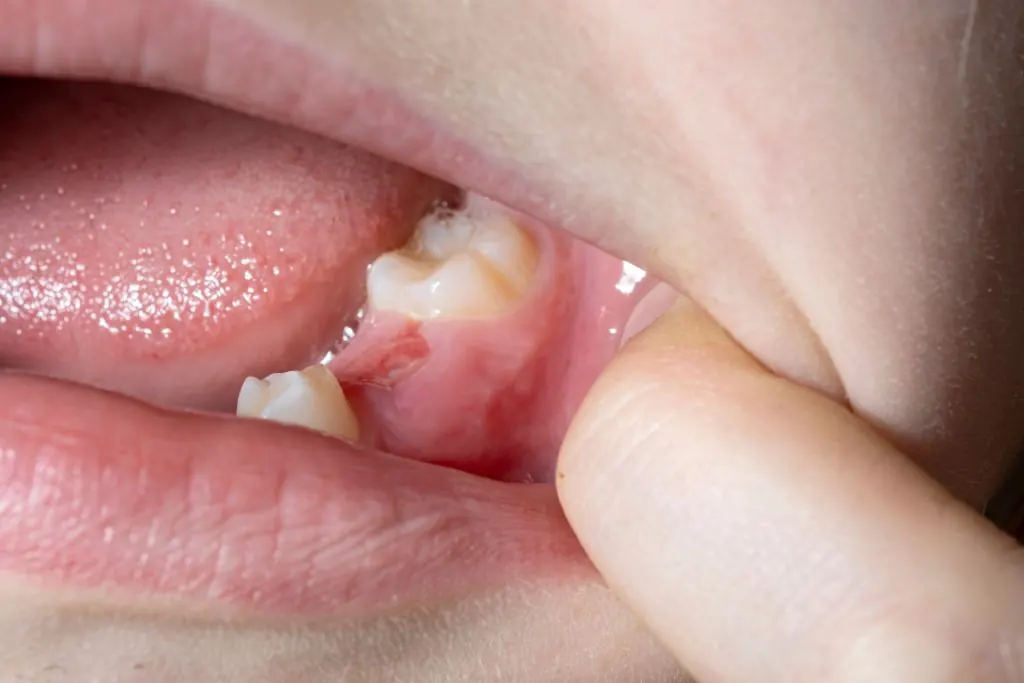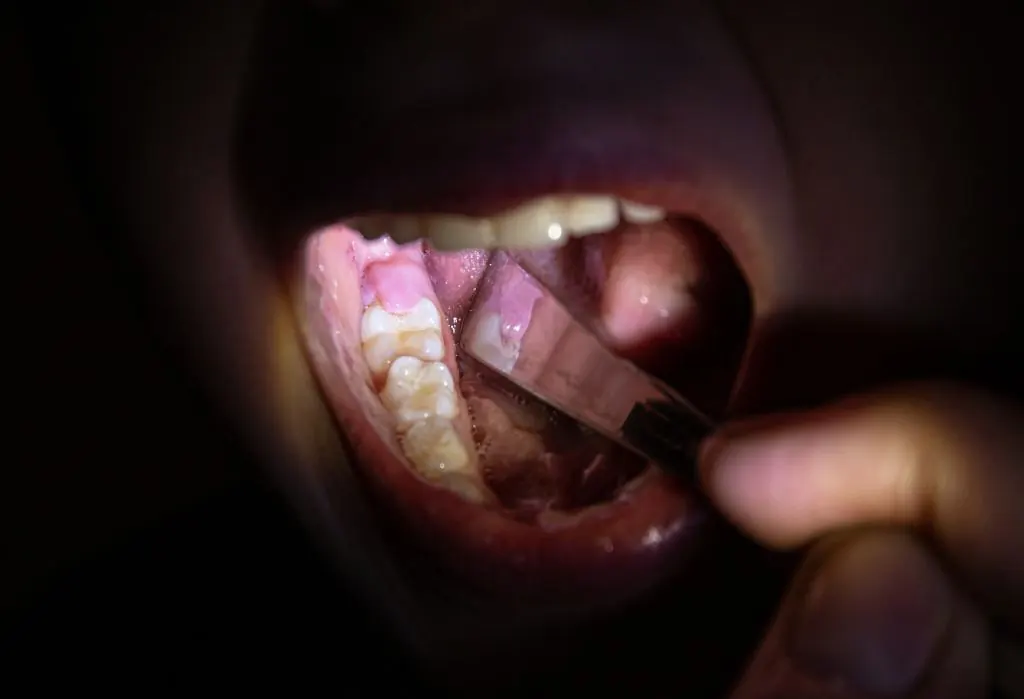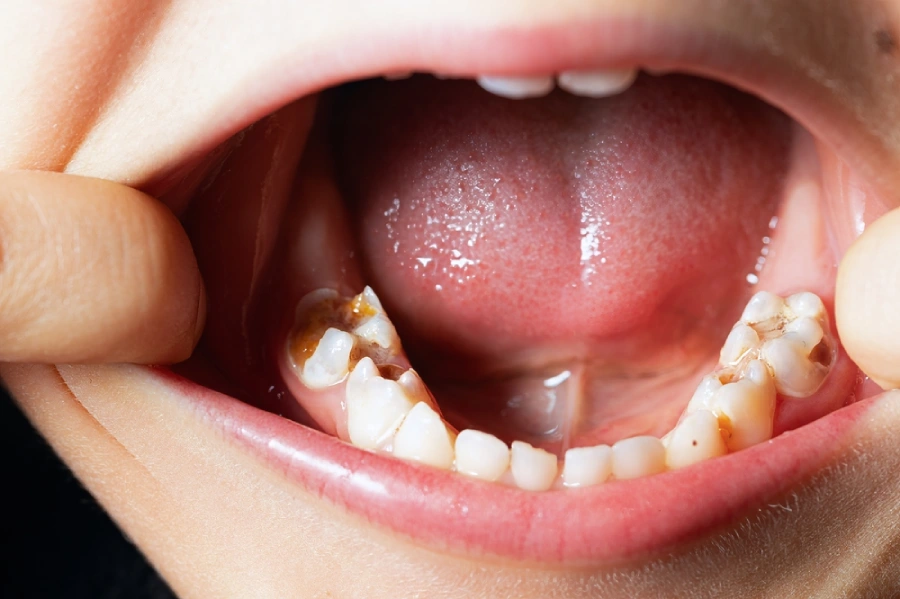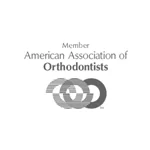
Here at The Super Dentists’, we refer to molars as the “chewing champions” of the mouth because they have the largest surface area of any tooth with prominent raised bumps called cusps that interlock with the opposing molars to make grinding food easier.
Molars also have the thickest enamel of any tooth in the human mouth, not to mention multiple long roots and a position in the back of the mouth where jaw muscles are strongest.
Needless to say, eating without molars is not an easy task. But with molars? Piece of cake!
So when do molars come in, exactly? To better understand the answer to that question, we’re going to take you on a quick journey through how and when human baby molars fall out and adult molars appear.
Molar Types: Primary vs. Permanent
Molars, like all human teeth, come in two types: primary and permanent (also called “baby teeth” and “adult teeth” respectively). Baby molars erupt (“come in” at different times relative to one another and then shed (“fall out”) at other times, making way for adult molars to “come in”, or erupt.
Oral Development 101: A Crash Course in Odontogenesis
Before we talk molars, only, let’s talk teeth, generally. There are two types of teeth, each of which develops in stages. The process of formation, eruption, and integration with surrounding tissues is what’s known as Odontogenesis.
There are also four unique categories of teeth, of which molars are one. These are:
- Molars
- Premolars
- Incicors
- Canines
On top of that, molars specifically (not to be confused with premolars) are broken into three subcategories:
- First molar
- Second molar
- Third molar (otherwise known as “wisdom tooth”
The reason we mention this is because both baby and adult molars “come in”, or erupt, in different stages as a child grows & develops, therefore the answer to the question “When do molars come in?” isn’t as simple as it may at first appear.
A Note On Upper vs. Lower Molars
The lower jaw is referred to technically as the mandible. The upper jaw is referred to technically as the maxilla. Therefore lower molars are technically referred to as mandibular molars, whereas upper molars are technically referred to as maxillary molars.
When Do Baby Molars Come In or Erupt?
Here’s what you need to know, according to the ADA’s Mouthhealthy website:
Upper or Maxillary Baby Molars on Either Side of the Mouth
- First Molar: 13-19 months of age
- Second Molar: 25-33 months of age
Lower or Mandibular Baby Molars on Either Side of the Mouth
- First Molar: 14-18 months of age
- Second Molar: 23-31 months of age
Do Kids Lose Molars?
Yes. Primary molars, or baby molars shed at different times, making way for adult molars (and the tooth fairy!)
When Do Adult Molars Come In, or Erupt?
Upper or Maxillary Adult Molars on Either Side of the Mouth
- First Molar: 6-7 years of age
- Second Molar: 12-13 years of age
- Third Molar (Wisdom Tooth): 17-21 years of age
Lower or Mandibular Adult Molars on Either Side of the Mouth
- First Molar: 6-7 years of age
- Second Molar: 11-13 years of age
- Third Molar (Wisdom Tooth): 17-21 years of age
Note: not everyone develops third molars, or wisdom teeth. It’s also not unheard of for individuals to have less than four wisdom teeth.
Do Adults Lose Molars?
Sometimes. If left unchecked, tooth decay resulting from periodontal disease or bad oral health can lead to the loss of adult teeth.
Tooth loss isn’t the only thing to worry about though. Poor oral health can also result in or contribute to:
- Oral infections
- Cardiovascular disease
- Respiratory infections
- Diabetes
- Pregnancy complications
- …And more!
Is Molar Eruption Painful?
The short answer is yes. Molar eruption/tooth development can be uncomfortable or even painful. The development of baby teeth in particular is also commonly referred to as “teething” (sound familiar?) This notorious stage of oral development is often marked by:
- Fussiness and crying
- Changes in sleep patterns
- Increased drooling
- Chewing on objects
- Red/swollen gums
Learn More: Contact The Super Dentists Today
The human mouth develops based on age and stage of life. So why don’t we treat oral health with an age and stage-based approach? Well, you can with SuperMouth!
Is your child having issues with their baby teeth or abnormal pain due to adult teeth coming in? Schedule an appointment for your child at The Super Dentists! We demystify dentistry for parents while providing a comfortable, fun, and interactive experience for kids.
TLDR: This blog discusses the importance of molars, detailing their types (primary and permanent), development process (odontogenesis), and the stages at which they erupt and shed. It covers the differences between upper (maxillary) and lower (mandibular) molars, the ages at which baby and adult molars come in, the possibility of losing molars due to poor oral health, and the discomfort associated with molar eruption. The Super Dentists emphasize a stage-based approach to oral health and invite readers to learn more about managing dental health for children.










